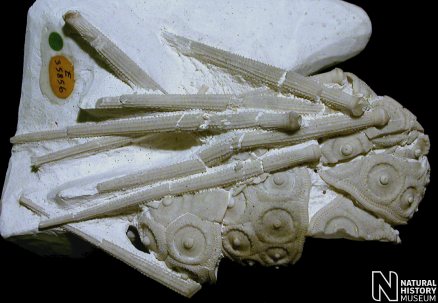
|
Temnocidaris (Stereocidaris) intermedia (Wiltshire in Wright, 1868) |
The primary spines of Temnocidaris intermedia are elongate, with a coarse thorny ornament and sometimes a flared tip. They are of near constant width along their length which distinguishes them from the superficially similar Temnocidaris sceptrifera sceptrifera whose primary spines mostly possess a swollen proximal portion. However, the adoral primary spines of T. sceptrifera sceptrifera are not swollen and can be indistinguishable from those of T. intermedia. Ranges from the Late Turonian to the Santonian.

1). Adapical view of a collapsed test with primary spines (x1.2, Seaford Chalk, Micheldever, Hampshire, BMNH (British Museum (Natural History) London) E35856. Image © 2008 The Natural History Museum, by kind permission.
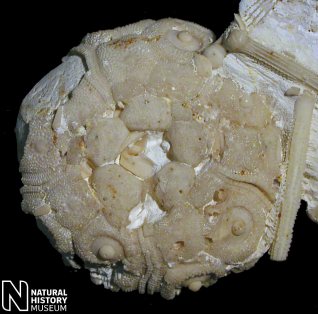 A A |
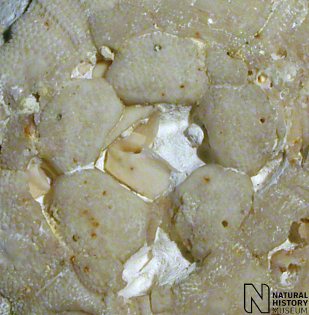 B B |
2). Well preserved test with primary spines; (A) Adapical view of test (x1.8); (B) Details of the apical surface which retains the apical disc (x2.3); Seaford Chalk, Northfleet, Kent, BMNH (British Museum (Natural History) London) E17114. Images © 2008 The Natural History Museum, by kind permission.
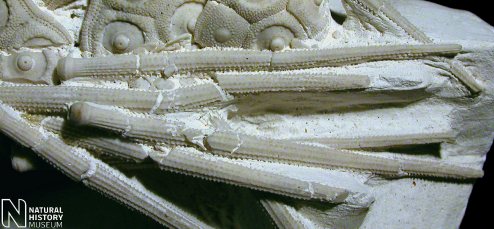
3). Primary spines, detail of the spcimen in figure 1 (x1.8, Seaford Chalk, Micheldever, Hampshire, BMNH (British Museum (Natural History) London) E35856. Image © 2008 The Natural History Museum, by kind permission.
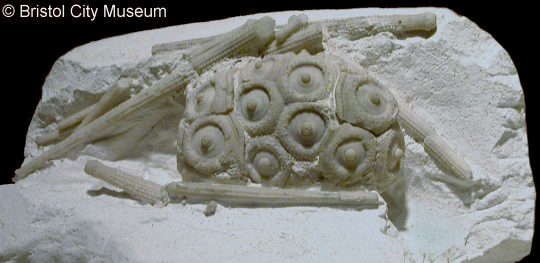
4). Complete test with spines (x1.4, White Chalk, in the collection of Bristol City Museum and Art Gallery).
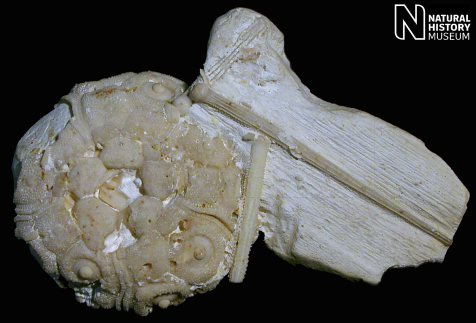
5). Adapical view of well preserved test with primary spines (overview of the specimen in figures 2A & 2B); (x1.6); Seaford Chalk, Northfleet, Kent, BMNH (British Museum (Natural History) London) E17114. Image © 2008 The Natural History Museum, by kind permission.
 A
A  B
B 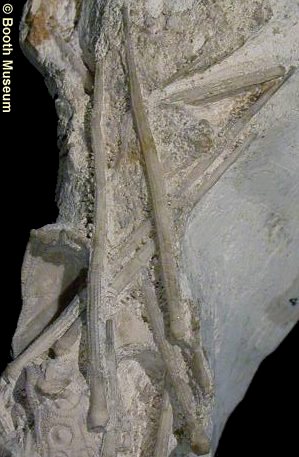 C
C
6). Various forms of primary spine. (A) Adoral spine, less elongate than the other spines (x3.5, Hope Gap, Lewes Nodular Chalk Formation, Beeding Beds, Randell Collection, RR1693); (B) Adoral spine with a flared tip, highly similar to adoral spines of T. sceptrifera sceptrifera (x2, Beachy Head, White Chalk Subgroup, Randell Collection, RR1331); (C) Typical primary spines, elongate, of near constant width, superficially similar to Prionocidaris vendocinensis but lack the thorny spines of that species and have more rows of spines (x1.3, White Chalk, Potter collection, Booth Museum, BMB 011314, by kind permission of John Cooper).
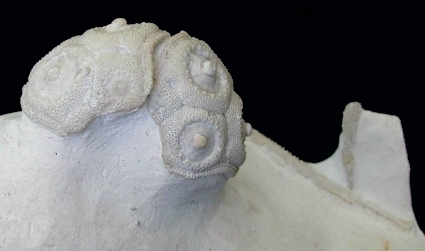 A
A 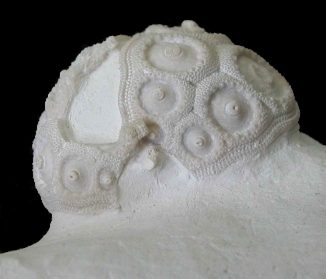 B
B
7). Partial test of a very mature individual (Beachy Head, White Chalk). (A) Adapical view (x1.5); (B) Adoral view (x2.0). Randell Collection, RR1331.
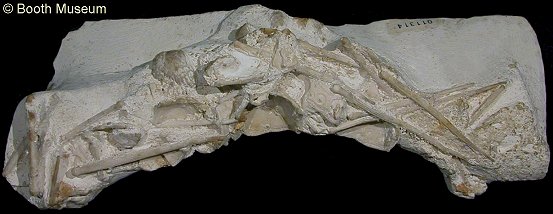
8). Disarticulated remains of one or more individuals with an associated brachiopod, all apparently infilling a burrow. The elongate primary spines are typical of Temnocidaris intermedia (x0.7, White Chalk, Potter collection, Booth Museum, BMB 011314, by kind permission of John Cooper).